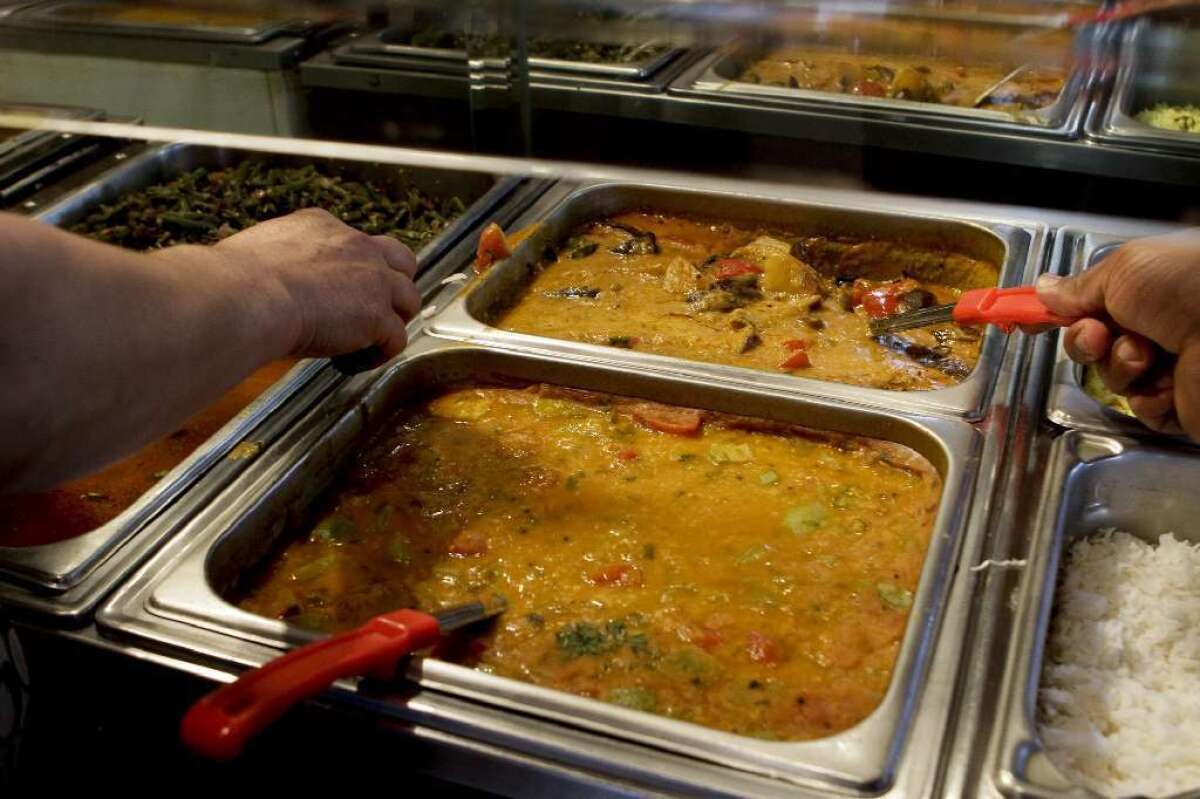We’re all in the clean-plate club, researchers conclude

Seems that most of us take to heart the common admonition to clean our plates, at least when we fill them ourselves.
Adults eat nearly 92% of the food they put on their plates, according to research published in the International Journal of Obesity.
------------
FOR THE RECORD
An earlier version of this post misspelled the Johns Hopkins Bloomberg School of Public Health as the John Hopkins Bloomberg School of Public Health.
------------
There were some variations: If people were distracted, they ate less, almost 89% of what they took; they ate 92.8% of meals but only 76.1% of snacks. At home or in a lab, the amount eaten was about the same, and men and women ate the same percentages.
“If you put it on your plate, it’s going into your stomach,” said Brian Wansink, director of the Cornell Food and Brand Lab and the study’s lead researcher. Wansink, who frequently studies eating habits, conducted the research with Katherine Abowd Johnson, a doctoral student at the Johns Hopkins Bloomberg School of Public Health.
The studies that looked at children showed they ate about 60% of what they took.
Nor is the urge to clean our plates strictly an American trait: The results were nearly identical in the United States, Canada, France, Taiwan, South Korea, Finland and the Netherlands.
A bit of good news: People who were eating fruits, vegetables, whole grains and lean meat or dairy ate more – 91.2% -- than those eating less healthful foods – 80.6%.
The researchers wanted to try to fill in a gap in studies about how much we eat, noting that portion size – particularly its increase – seems connected to the epidemic of overweight and obesity. Some studies measure what people take when they serve themselves, such as at buffets. Others measure how much of a plate of food that’s served people ate. Wansink and Johnson wanted to look at how much people ate when they served themselves.
They analyzed 14 studies. Their study, the researchers said, offers preliminary evidence on the topic but can give people some direction in the search for a path to a healthier population.
As researchers from several disciplines work to find ways to address overeating and obesity, figuring out what makes people consume more or less is an important goal. The researchers in the current study noted that when a study shows, for example, that skipping a meal led people to take 200 extra calories at the following meal, what really matters is how much of the food they ate.
This study could help suggest the answer. And the answer generally is “most of it.”
“Just knowing that you’re likely to consume almost all of what you serve yourself can help you be more mindful of appropriate portion size,” Wansink said in a statement.
Care about your food? Follow me on Twitter: @mmacvean







